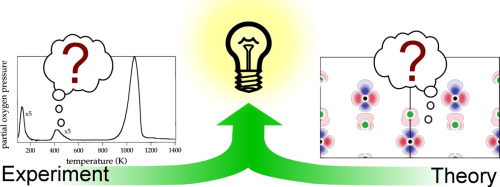Combined experiment and theory approach in surface chemistry: Stairway to heaven?
Published:

Highlights
- Structure determination by a combined theory experiment approach
- HCl oxidation over chlorinated TiO2(110) model catalysts
- Microscopic insight into the oxidation of Ru(0001)
- Ab-initio kinetic Monte Carlo simulations of CO oxidation over RuO2(110)
- Ab-initio thermodynamics to study the electrochemical chlorine evolution reaction
Abstract
In this perspective we discuss how an intimate interaction of experiments with theory is able to deepen our insight into the catalytic reaction system on the molecular level. This strategy is illustrated by discussing various examples from our own research of surface chemistry and model catalysis. The particular examples were carefully chosen to balance the specific strength of both approaches – theory and experiment – and emphasize the benefit of this combined approach. We start with the determination of complex surface structures, where diffraction techniques in combination with theory are clear-cut. The promoter action of alkali metals in heterogeneous catalysis is rationalized with theory and experiment for the case of CO coadsorption. Predictive power of theory is limited as demonstrated with the apparent activity of chlorinated TiO2(110) in the oxidation of HCl: Even if we know all elementary reaction steps of a catalytic reaction mechanism, the overall kinetics may remain elusive and require the application kinetic Monte Carlo simulations. Catalysts are not always stable under reaction conditions and may chemically transform as discussed for the CO oxidation reaction over ruthenium. Under oxidizing reaction conditions ruthenium transforms into RuO2, a process which is hardly understood on the molecular level. Lastly we focus on electrochemical reactions. Here theory is clearly ahead since spectroscopic methods are not available to resolve the processes at the electrode surface.
Links
K.S. Exner, F. Hess, H. Over, A.P. Seitsonen. Surf. Sci. 640 (2015) 165-180. 10.1016/j.susc.2015.01.006
